What is Buoyancy?
Buoyancy is the ability of an object to float in a liquid. The relation of the object's weight to the weight of the water displaced is what determines if the object will float; although the size and shape of the object do have an effect, they are not the primary reason why an object floats or sinks. If an object displaces more water than its weight, it will float. Buoyancy is an important factor in the design of many objects and in a number of water-based activities, such as boating or scuba diving.
The Archimedes Principle
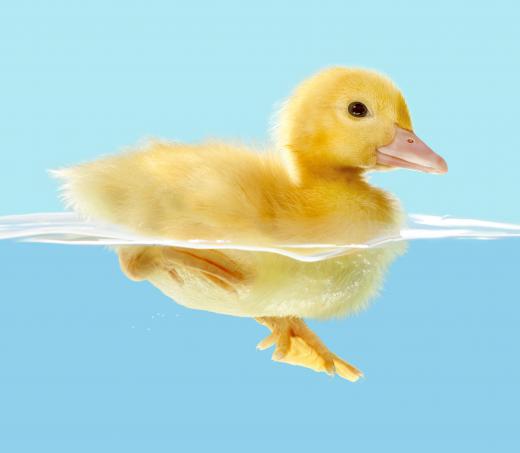
The mathematician Archimedes, who lived in the third century B.C., is credited with discovering much of how buoyancy works. According to legend, he was getting into a bath one day and noticed that the more he immersed himself in the water, the more its level rose. He realized that his body was displacing the water in the tub. Later, he determined that an object under water weighed less than an object in air. Through these and other realizations, he established what came to be known as the Archimedes Principle:
Positive, Negative, and Neutral Buoyancy
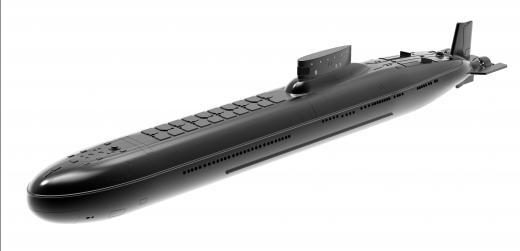
An object that floats in a liquid is positively buoyant. This means that the amount of water displaced by the object weighs more than the object itself. For example, a boat that weighs 50 lbs (23 kg) but displaces 100 lbs (45 kg) of water will easily float. The boat displaces more water than its weight in part because of its size and shape; most of the interior of a boat is air, which is very light. This explains why massive ocean liners float: as long as the water displaced weighs more than the ships themselves, they will not sink.
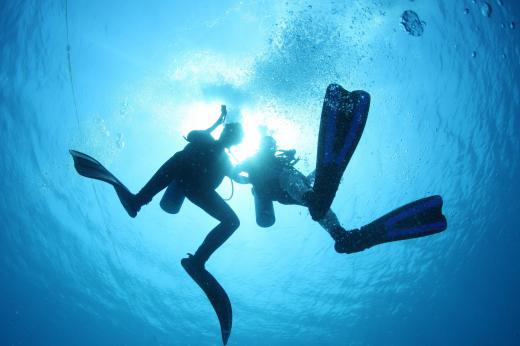
Negative buoyancy is what causes objects to sink. It refers to an object whose weight is more than the weight of the liquid it displaces. For example, a pebble may weigh 25 grams, but if it only displaces 15 grams of water, it cannot float. If the 50 lbs (23 kg) boat was loaded down with 75 lbs (34 kg) of freight, it would no longer float because its weight (125 lbs or 56.69 kg) is heavier than the weight of the water it displaces (100 lbs or 45 kg).
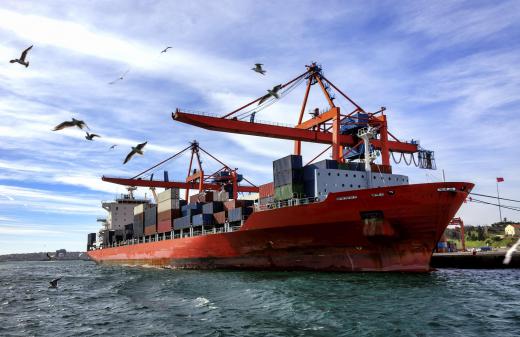
It is also possible for an object to be neutrally buoyant. This means that the object's weight and the amount of liquid it displaces are about the same. A neutrally buoyant object will hover in the liquid, neither sinking nor floating. A submarine can adjust it weight by adding or expelling water in special tanks called ballast tanks. By properly balancing its ballast, the sub can hover at various levels under the surface of the water without sinking.
Size and Shape
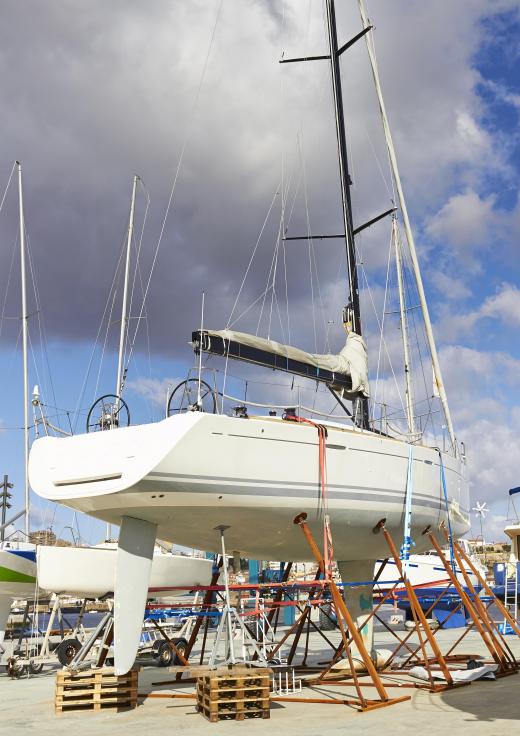
How much of an object's surface touches the water has an effect on its buoyancy. A very large ship has a lot of surface area, which means that the ship's weight is spread out over a lot of water, all of which is pushing up on the ship. If the same ship was in the water with the bow pointing down, it would start to sink because all of the weight is concentrated in one small area, and the water it is displacing weighs less than the weight of the ship.

A common example used to demonstrate this is a person floating in water. If the person floats on her back, her entire body can stay at or near the water's surface. When she floats in the water with her feet down, she'll sink farther; typically, only her upper body will stay at the top of the water.
Stability
Stability in a fluid depends on the location of an object's center of buoyancy in relation to its center of gravity. An object's center of gravity is the point in the object where all of the object's weight appears to be concentrated; it can also be thought of as the average location of the object's weight. The center of buoyancy is the center of gravity of the water that the object has displaced. This is not in the water, but in the object floating on it.
When the center of buoyancy is directly above the center of gravity, then the object will be stable. If, however, the center of gravity is above the center of buoyancy — as in a ship that is loaded with freight high above the water line — then the object becomes unstable. If the freight shifts to one side for any reason, the center of gravity and the center of buoyancy will no longer line up. The ship will tip over as the center of buoyancy tries to rise above the center of gravity again.
In the human body, the center of gravity is usually in the area of the navel. The center of buoyancy is slightly higher, which is why a body tends to float upright with the shoulders and torso above the legs. Turned upside down, where the legs are above the torso, the body's center of gravity is above the center of buoyancy. This makes the body unstable, and the position can only be maintained through effort.
Buoyancy in Practice
By applying the principles of buoyancy, engineers can design boats, ships, and seaplanes that remain afloat and stable in water. This is true of many other objects, such as life preservers and pontoons. Just about anything designed for water relies on an understanding of these principles.
Many swimmers know that there are ways to make their bodies more buoyant, such as lying on their backs or holding a full breath. In addition, trying to dive to the bottom of a pool takes effort because the body naturally floats. Scuba divers in particular need to know how to float, hover, and sink, and they often wear extra weights and other gear to help them manage these maneuvers.
AS FEATURED ON:
AS FEATURED ON:
















Discussion Comments
@anon46535: Buoyancy is a force, just like gravity (except they do the opposite thing). Imagine two things pushing against each other: buoyancy on the bottom and a mix of gravity and weight (mass if your a scientist) on the top. If the mass of the object is small the object floats, if not it sinks. Easy as that.
The easiest way to float is by lying on your back in a star formation. I learned that in swimming class.
Regarding the girl floating on her back or floating with her feet down: shouldn't the buoyancy be exactly the same by definition? Regardless of the position in the water, her body still displaces the same amount of water, thus having identical buoyancy. Same as the ship. Yes it will displace deeper water but it will not displace more water due to its position. Any additional comments are appreciated.
@HappyNice662: A buoy has many purposes. One main purpose is to mark where channel boundaries are located so passing boats or ships do not run aground.
The colors are very important. If the green buoy is on the right and the red is on the left, you are generally heading out to sea.
If the red buoy is on your right and green on your left, you are heading back to port. Remember the 3-R's; Red, Right, Return -- taught in most US Coast Guard boating safety classes.
You write: "If the person floats on her back, her entire body can stay at or near the water's surface..."
Although women generally have more body fat than men, I believe the same principle also applies to men, although to a lesser degree.
Does the above info suggest that everyone should be able to float in a body of water, i.e. a lake, or pool? I am the only person I know who can stay floating with my ankles crosses and my hands behind my head for a long period of time. It's sort of boring, so I don't do it for long periods. I've been able to do this since I was a young child and I have more than doubled my weight since then. I have always been curious as to why I could do it, and none of my children can.
What are the dimensions required to carry a 30 ton weight on a catamaran? What pontoon size and craft size of do I need?
It really helps me understand my Ecology which is related to water buoyancy.
who first used buoyancy? was it archimedes?
Is there any other method for ocean liners to be able to float rather than using air compartments?
how much air in a rubber inner tube is required (4pcs per car) to float the car on water. Anyone have any idea?
Thank you so much. The info was relevant and helpful.
Doing a science fair project and this was a simple explanation my 10 year old could use and understand.
This information was very helpful. thank you.
@anon67690: objects don't lose weight in water. objects in the air are denser than the air so they don't float in the air. that same object may be less dense than water so it floats. i have a weird idea. what if there was helium on planes?
why is there more of a possibility for people to drown in a swimming pool than in the sea?
it's really good information.
it's really helpful. thank you!
very helpful.
Who wrote this article, when was it published? who is the editor? I am doing research for a school science fair project and I need to fill out a bibliography worksheet, so sorry if this seems mean.
buoyancy also is in the air and some air vessels float in it like blimps.
why does an object lose weight in the water?
if an object is buoyant in air, is it buoyant in water?
i need help on a research project about why an egg floats in salt water.
I have to do a research paper on buoyancy and water drop high. i need help with it.
How do gravity, buoyancy, and density interact to keep a ship afloat?
Are there cases where buoyancy can't be reached?
what is the formula for air volume to float a certain weight?
how can you make something neutrally-buoyant? is it even possible?
how does buoyancy help objects float on liquid?
I have a life jacket with a buoyancy of 10.5. How many kilograms can this jacket withstand?
i want to build a pontoon as a platform to carry weight 30 ton. what is the plan (to use it in the red sea) best regards, yehea tawfik
How do you calculate the weight of water being displaced?
does anybody know more about the mary celeste mystery???
Is there any other method for ocean liners to be able to float rather than using air compartments?
Dear HappyNice662,
A buoy's purpose in a harbor is to either mark where people left their boats, where there is a lobster trap, or just to mark a spot of some sort.
From,
Anonymous
I have a question concerning buoys. When they're in a harbor, what is their purpose?
Great descriptions!! I wonder how people that scuba dive are able to neutral when they weight the same as how much water they displace???
what are some antonyms of buoyancy
how is Buoyancy related to heat transfer?
how do we use buoyancy in everyday life?
is it possible for a person to be unable to float, or can't reach buoyancy?
Post your comments